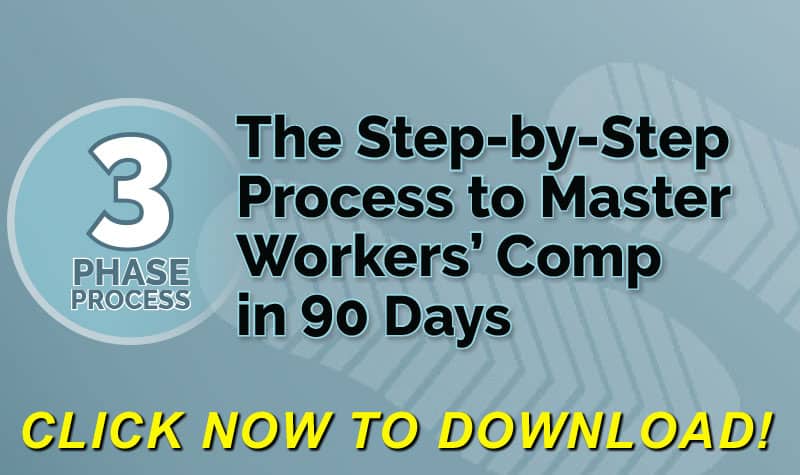Hello, Michael Stack here, Principal of Amaxx, Founder of COMPClub, and co-author of Your Ultimate Guide To Mastering Workers Comp Costs. The recent opt-out discussion at the WCRI Conference was nothing short of a title fight. Trey Gillespie, who’s the Senior Director of Workers Compensation at the Property Casualty Insurers Association of America, as well as Bill Minick, who’s the President of PartnerSource, faced off with very professional and strong arguments both for and against opt-out. What I want to do is give you a summary of that discussion, and talk about some of the best practices that can impact you and your organization.
Benefits of State Plan Are Regulated; Opt-Out Defined By Employer
When you talk about comparing opt-outs to the state system, the main area of comparison is in the injuries and benefits that are covered. We’re going to compare the state system of Oklahoma against their opt-out plan, which is called the Injury Benefit Plan. In the state system of Oklahoma, injuries and benefits, just like the 49 other states, are state regulated. In order to qualify for those benefits in that particular state, the injured worker needs to be injured in the course and scope of employment. Very basic workers’ compensation 101. It’s going to vary by jurisdiction significantly as far as the laws, but these basics are fundamental across the entire country.
Now let’s talk about the opt-out plan. It was defined in Oklahoma that the benefits need to be equal to or greater than the state. That’s the way it was originally presented, and that’s the way that that act originally passed. Here’s the rub, and here’s the reason why that plan, that injury benefit plan, the opt-out plan at Oklahoma, was recently determined to be unconstitutional; is because the employers define what is and is not an injury in their plan. I’ll paraphrase from the conclusion of the judge that deemed it unconstitutional. It was a Dillards workers’ compensation case, and this judgment came out in February of 2016. He said that while standards of the state act, certain standards like the average weekly wage, the death benefits, disability benefits, do apply to the Injury Benefit Plan, no other provision of the plan applies unless expressly incorporated. He said, “While certain aspects of the plan, like the average weekly wage, the death benefits, the disability benefits, do apply down here, no other provisions apply unless expressly incorporated.”
One of the aspects that Trey pointed out was that claims that are reported after 24 hours are typically excluded from those plans, so a claim that’s reported 3-4-5 days later, 7 days later, can be excluded from the plan and not covered under workers’ compensation. Only about 60 employers in the state of Oklahoma have actually opted in, so clearly by the general nature of the ability for companies, and certainly not all companies that have opted-out would do this, but the ability for them to unfairly treat injured workers, and the judge’s unconstitutional conclusion, obviously that employer plan in Oklahoma has a ways to go before it’s a responsible alternative to workers’ compensation.
Accountability & Communication
Let’s talk about some of the best practices that we can pull out of this presentation, and how it can impact your organization. Bill’s main point was in the opt-out plan, there’s significant accountability and communication…he said there’s significant accountability and communication…accountability and communication…accountability and communication. Hold on to that point because it’s a significant one for you and your organization. In the state plan, the accountability and communication requirements are very low, in the opt-out plan, they’re very high. Obviously this isn’t the right thing to do, but having the requirement that claims are reported within 24 hours creates a significant opportunity for improvements in workers’ compensation outcomes.
Let’s talk about how this can impact you and your company. Accountability and communication, regardless of the state you’re in, regardless of the jurisdiction you’re in, regardless of if you’ve opted out or not opted out, are fundamental techniques in workers’ comp cost containment. Fundamental techniques in creating a high integrity work comp management plan that not only creates better outcomes for your injured workers, but it significantly reduces your cost. Implementing accountability is as simple as creating an employee brochure, creating a culture of reporting claims within 24 hours, not because your claim is going to be denied, because it’s the right thing to do, and it’s a better outcome for the injured worker. They’re going to report those claims because it’s better for them, not because it’s better for you. They’re going to get treatment faster, get returned to work faster, reduce your costs, reduce their length of time with a disability.
Implementing a communication plan, again, of setting those expectations and then meeting those expectations. Hold weekly meetings with your injured workers. Talk to them about how you can creatively create a return to work plan to get them back functioning, being productive for themselves, and your company. It’s part of a high integrity work comp management program that not only creates better outcomes, but it significantly reduces your work comp costs.
Remember your success in workers compensation is defined by your integrity, so be great!
Author Michael Stack, Principal, COMPClub, Amaxx LLC. He is an expert in workers compensation cost containment systems and helps employers reduce their work comp costs by 20% to 50%. He works as a consultant to large and mid-market clients, is co-author of Your Ultimate Guide To Mastering Workers Comp Costs, a comprehensive step-by-step manual of cost containment strategies based on hands-on field experience, and is founder of COMPClub, an exclusive member training program on workers compensation cost containment best practices. Through these platforms he is in the trenches on a working together with clients to implement and define best practices, which allows him to continuously be at the forefront of innovation and thought leadership in workers’ compensation cost containment. Contact: mstack@reduceyourworkerscomp.com.
©2016 Amaxx LLC. All rights reserved under International Copyright Law.
Do not use this information without independent verification. All state laws vary. You should consult with your insurance broker, attorney, or qualified professional.






